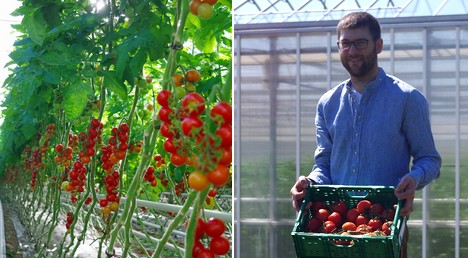As climate change and resource scarcity challenge traditional agriculture, vertical farming has emerged as a beacon of hope. This innovative approach, using stacked layers and soil-less cultivation methods like hydroponics and aeroponics, aims to maximize productivity while minimizing environmental impact. With projections that the global vertical farming market will grow from $3.76 billion in 2021 to $26.37 billion by 2030 at a CAGR of 24.42%, the potential is undeniable. But with opportunity comes complexity.
Market Growth and Investment
The exponential growth of vertical farming is fueled by the pressing need for food security and sustainable agricultural practices. Global demand is being driven by urbanization, population growth, and the decreasing availability of arable land. Governments worldwide are recognizing this need, providing substantial support to drive innovation and investment in this sector.
For example, in 2022, the United States Department of Agriculture (USDA) launched a $10 million initiative focused on vertical farming and related technologies to promote food security. The European Union has also invested in vertical farming research through programs like Horizon 2020, promoting sustainable food production technologies.
In Asia, where land scarcity is a major challenge, countries like Japan, China, and Singapore are leading in vertical farming adoption. Japan has developed advanced high-tech vertical farms, some capable of producing 10,000 heads of lettuce daily, while Singapore’s “30 by 30” initiative aims to produce 30% of its food locally by 2030. These government-backed efforts demonstrate the growing global commitment to vertical farming.
Technological Innovations Driving Vertical Farming
The vertical farming industry thrives on continuous technological innovation. Key advancements include the integration of artificial intelligence (AI), machine learning (ML), and automation. These technologies optimize growing conditions, from temperature and humidity to light intensity, and even predict crop health and manage resource use efficiently. AI platforms analyze real-time data collected from sensors embedded in the farms, enabling precision agriculture that reduces waste and maximizes yield.
LED lighting systems are another area where technology has made a substantial impact. Today’s LED systems are more energy-efficient, delivering light wavelengths optimized for plant growth while consuming significantly less energy than traditional lights. This improvement is crucial, given that energy consumption is one of the major cost factors in vertical farming.
Automation and robotics are also revolutionizing the sector. Automated planting, monitoring, and harvesting systems ensure consistent crop quality while reducing labor costs. Vertical farms are also increasingly adopting renewable energy sources, like solar and wind, to lower their carbon footprint and operational expenses. Additionally, blockchain technology is emerging as a tool for supply chain transparency, giving consumers confidence in the origins and safety of their food.
Challenges Hindering Widespread Adoption
Despite rapid advancements, vertical farming faces considerable obstacles. High initial setup costs remain a significant deterrent, particularly when facilities incorporate sophisticated technologies like AI and robotics. Additionally, the energy demand for artificial lighting and climate control remains a challenge, especially in regions with high electricity costs. This dependence on energy makes vertical farms vulnerable to market fluctuations, such as the post-Ukraine war surge in energy prices that drove some operations out of business.
Crop variety is another limitation. While leafy greens, herbs, and microgreens thrive in controlled environments, crops like wheat, corn, and root vegetables are less suitable for vertical farming systems. Research is ongoing to expand the range of crops that can be efficiently grown, but breakthroughs are still needed to diversify production.
Labor costs and a shortage of skilled workers in agriculture add to the industry’s difficulties. Although automation can mitigate labor demands, the complexity of running a fully automated farm requires expertise that is not widely available.
Leading Companies Shaping the Industry
Several companies are at the forefront of the vertical farming revolution:
- AeroFarms: Based in New Jersey, AeroFarms utilizes aeroponics and advanced environmental control to produce leafy greens. They are pioneers in scaling vertical farms sustainably.
- Plenty: With its proprietary technology, Plenty aims to optimize urban agriculture through energy-efficient vertical farms. Their operations focus on scaling to meet urban food demands.
- Lufa Farms: This Montreal-based company operates rooftop greenhouses, integrating vertical farming with natural sunlight to minimize energy use and carbon emissions.
- Infarm: Berlin-based Infarm provides modular farming units for urban environments, making it possible to grow fresh produce in supermarkets and restaurants.
- Vertical Harvest: Combining vertical farming with social impact, Vertical Harvest creates jobs for people with disabilities while producing fresh produce in urban areas.
- Green Spirit Farms: Located in Michigan, they operate hydroponic farms producing year-round leafy greens and herbs with a reduced environmental footprint.
- Bowery Farming: This New York-based company uses AI-driven automation to grow greens efficiently and sustainably, distributing their products to grocery chains.
- Farm.One: Known for growing specialty crops for chefs, this urban farm in New York emphasizes minimal resource use and hyper-local food production.
- Sky Greens: In Singapore, Sky Greens uses gravity-driven vertical systems to grow greens, addressing food security concerns in a land-scarce country.
- Urban Crop Solutions: Offering customizable vertical farming setups, this Belgian company provides solutions to improve urban agriculture efficiency globally.
Vertical farming stands at a crossroads, with immense potential to reshape agriculture and address food security. However, the journey from hype to widespread adoption is fraught with challenges. Technological advancements, government support, and innovative business models will be crucial in determining the industry’s future. As research and investment continue, vertical farming could become a mainstay of sustainable, urban agriculture, but only time will reveal its full impact.











